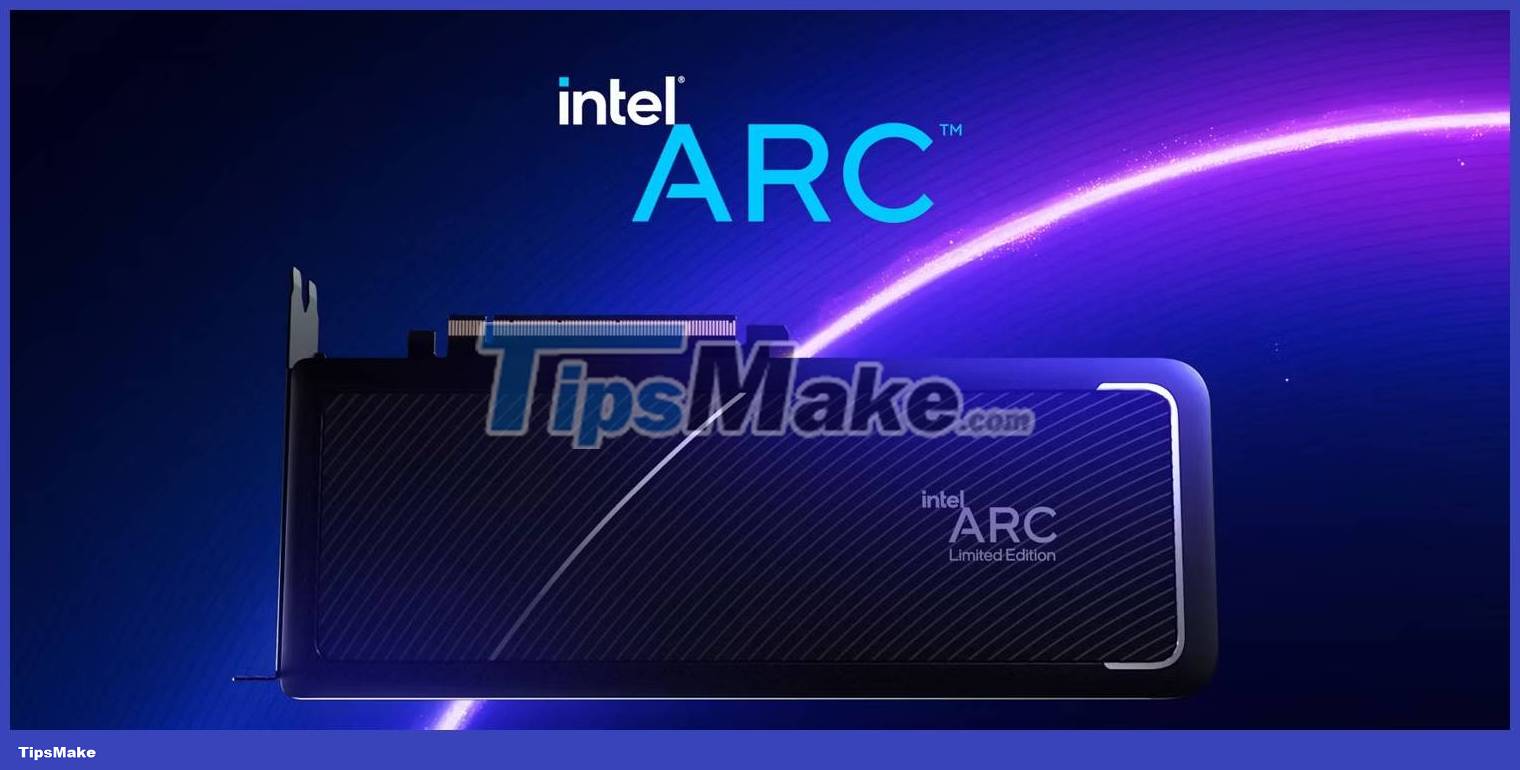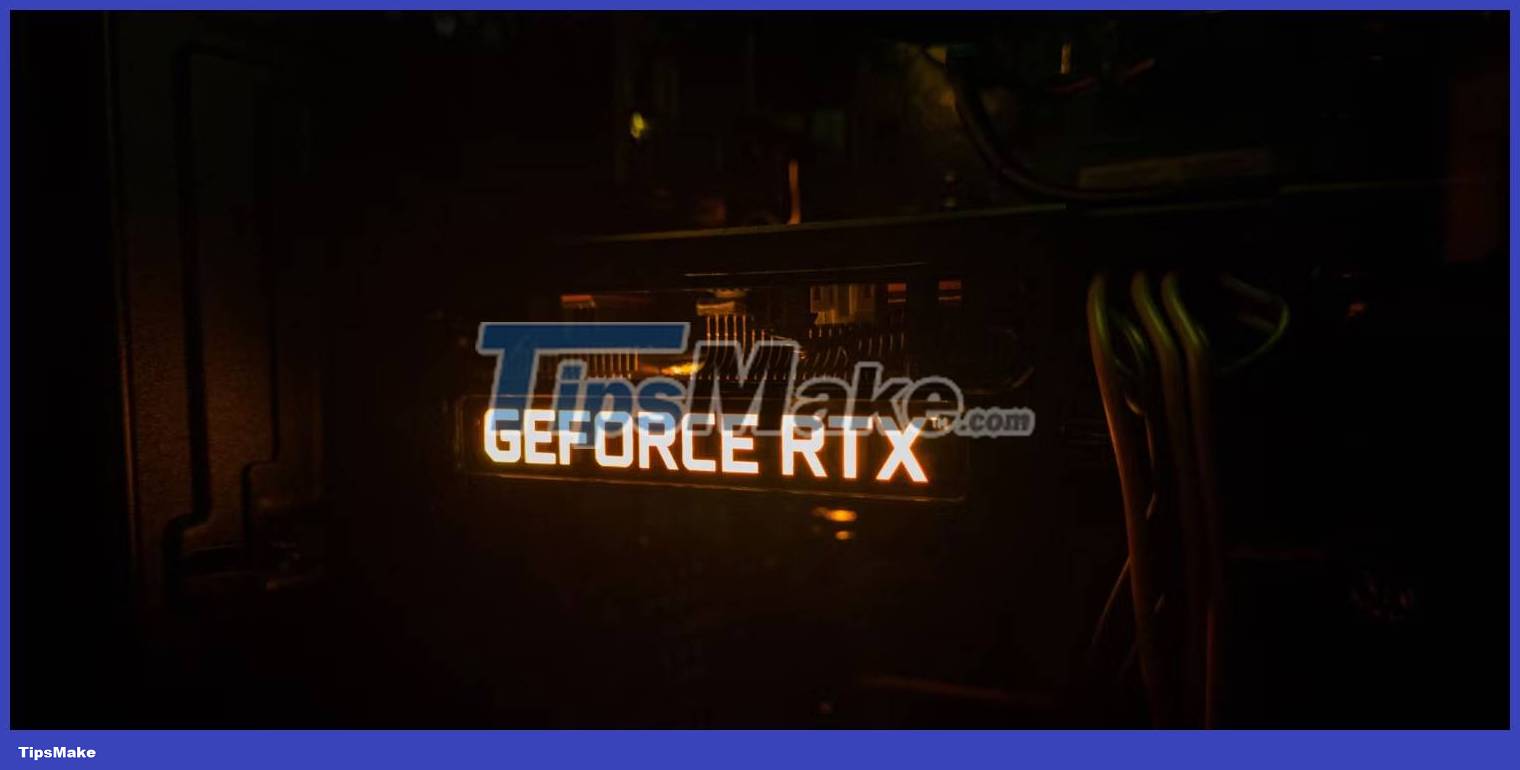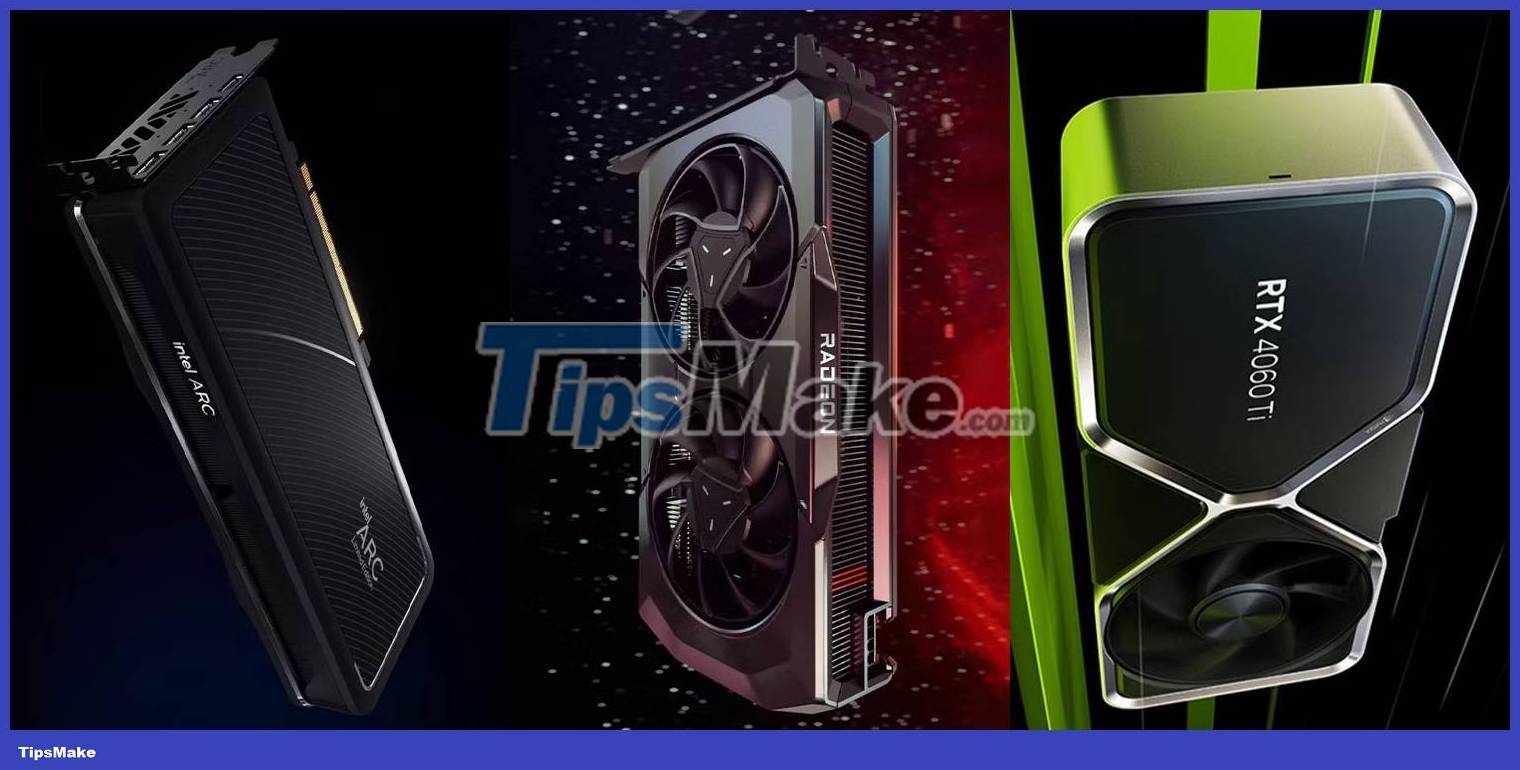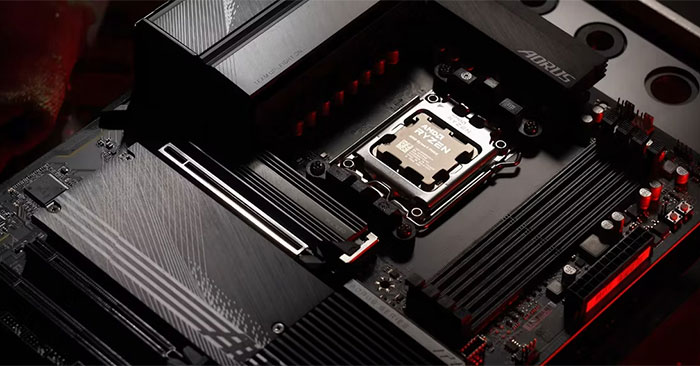4 reasons to switch to Intel Arc GPU
The graphics card war has been going on for too long between Nvidia and AMD: Nvidia with GeForce RTX GPUs. and AMD with the Radeon line. But we desperately need a third party to enter the market and control both of these companies. That's the direction Intel sought to take when it launched its Arc GPU.
But are Intel's Arc GPUs good enough and should you try them?
1. Intel Arc GPUs are really cheap

Perhaps the most important reason to choose Intel GPUs over Nvidia or AMD GPUs is the one Intel itself has advertised: They are really cheap.
The Intel Arc A770, Intel's flagship GPU at the time of writing, costs only $349. Meanwhile, the lower-end Arc A750, which is also quite good, costs only $249. And the entry-level card, the Arc A380, can be purchased for as little as $139. True, these are not high-end cards (the A770 is on par with the Nvidia RTX 3060 Ti). But for what they offer, the cards aren't expensive and are even cheaper if you hunt for a great deal.
That is definitely good news. We are used to graphics card prices increasing every year. The Nvidia RTX 3080, due out in 2020, starts at $700, while the RTX 4080, launched just two years later in 2022, starts at $1,200. The higher-end RTX 3090 starts at $1500, while the RTX 4090 starts at $1600. GPU manufacturers feel confident enough that people will buy their products, so they don't hesitate to raise prices significantly.
So, seeing a GPU manufacturer buck this trend and make its cards affordable is great, getting users excited about what Intel has to offer. Right now, Intel doesn't have anything that can compete with high-end cards right now, but that doesn't mean things won't change in the future.
It should also be clear that Intel is doing this in an effort to cement its position in a market that has for years been dominated by the two companies. Sure, Intel is a CPU giant, but graphics cards are an area the company hasn't explored yet. What better way to get people to consider your products than to make them cheaper than the competition? It is uncertain whether Intel will continue with its "low price" strategy after it has received some recognition in the GPU field and pushed its full potential with its most advanced, high-performance cards. If so, that would be great.
What we do know, however, is that this benefits everyone, as a lower-priced competitor would force AMD and Nvidia to compete harder by lowering their own prices. Ultimately, it's a win-win situation for the buyer.
2. Intel's Arc GPU Is Growing Fast

Intel has just confirmed its position as a GPU manufacturer. While that may sound bad, it also means that, as the card matures, Intel will make better drivers. Intel's GPU has great hardware; but for the most part, they are not well used by Intel drivers. As this changes, the cards will essentially continue to achieve better performance.
In fact, this has already happened. Intel Arc "re-evaluating" took place after driver updates because they improve performance so much that it's worth re-running the benchmark and updating the performance. Previously inconsistent performance on some games is rapidly changing, and games are performing better on new Intel cards as time goes on.
Please note, Intel's Arc GPU is not enough to match the performance of an RTX 4090 or similar card. Intel will need to release a true flagship GPU for that to happen. But it was enough to allow Intel to surpass itself.
3. Intel Arc GPU supports most of the features in other GPUs
The third and most important consideration is that the Intel Arc GPU is really not inferior to anything compared to other GPUs. Although relatively new, Intel Arc GPUs support most of the features you know and love from other GPUs.
They may not be as polished as similar features in Nvidia/AMD GPUs, but again, Intel is perfecting things over time - and in future generations it will even add some things that the card currently lacks. Even without being up to speed, these GPUs are on their way to being reliable, if not superior to Nvidia/AMD options. Intel's future looks promising in this respect.
4. Intel Arc GPU is an alternative to Nvidia & AMD

Last, but not least, one of the main reasons to buy an Intel Arc GPU is that Intel is a new company and could play a pivotal role in shaping what the GPU market will look like over the next few years.
Nvidia and AMD have pretty much competed against each other over the years. If a third party comes along and has a sufficient following, that will eventually force the market to change and both GPU giants will have to compete even harder, perhaps by offering better features or reducing prices. Nvidia has been too comfortable pricing its newer cards above $1000, and having some more competition will help avoid this. This will be beneficial for everyone and mainly consumers.
You should read it
- Top 5 best Intel CPUs 2022
- What's the difference between Intel Core and Intel Core X CPUs?
- Intel ARC Xe-HPG 'Alchemist' GPU Leak: High Performance, Launching in 2022
- 6 reasons to avoid Intel's 14th generation CPU
- Unfair competition, Intel was fined EUR 1.06 billion in Europe
- Intel will unveil the 'new computing era' at IFA 2014
- Intel launched a super-saving computer model priced from 3 million
- Intel's 9th generation microprocessor can be released on October 1
- What is the Intel NUC?
- What is Intel's new Core i9 CPU line?
- Researchers found a way to disable Intel ME
- Intel Arc 'Alchemist' GPU Will Come With DisplayPort 2.0, Support Up To 16K Display Resolution
May be interested

6 Best RGB RAM 2023

7 simple ways to increase the life of your external hard drive

Everything you need to know about AMD's A620 Entry-level motherboards

5 best motherboards for Threadripper CPUs

10 best Z790 motherboards for 13th Gen Intel CPUs

What is the difference between Cherry MX and Topre? Which one should I choose?






 10 reasons to switch from console gaming to PC
10 reasons to switch from console gaming to PC 6 reasons you don't need to upgrade to an Intel Core i9 CPU
6 reasons you don't need to upgrade to an Intel Core i9 CPU 6 reasons why many people regret buying Nintendo Switch
6 reasons why many people regret buying Nintendo Switch Reasons to switch to Linux
Reasons to switch to Linux 6 reasons to avoid Intel's 14th generation CPU
6 reasons to avoid Intel's 14th generation CPU Reasons to switch to eSIM
Reasons to switch to eSIM